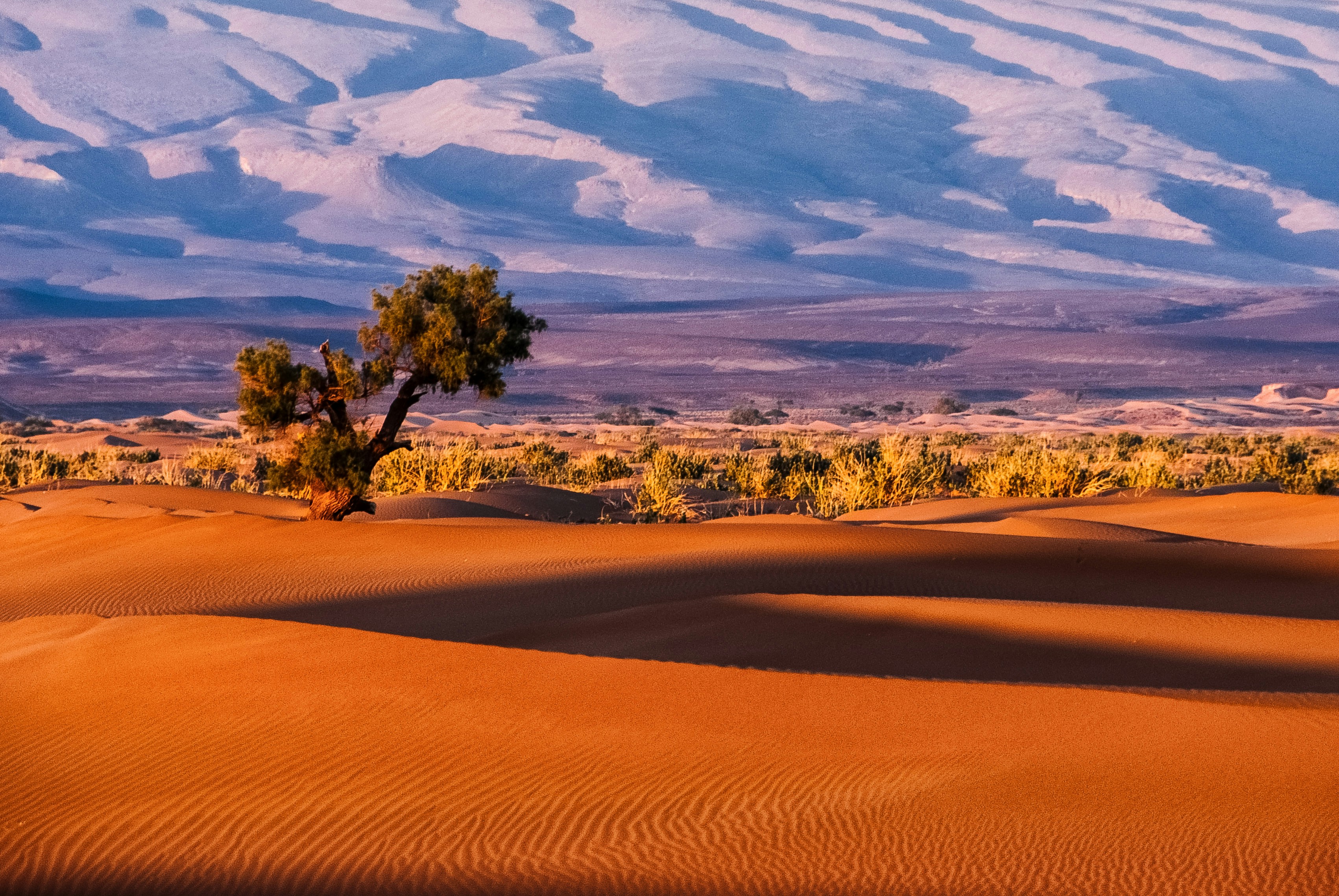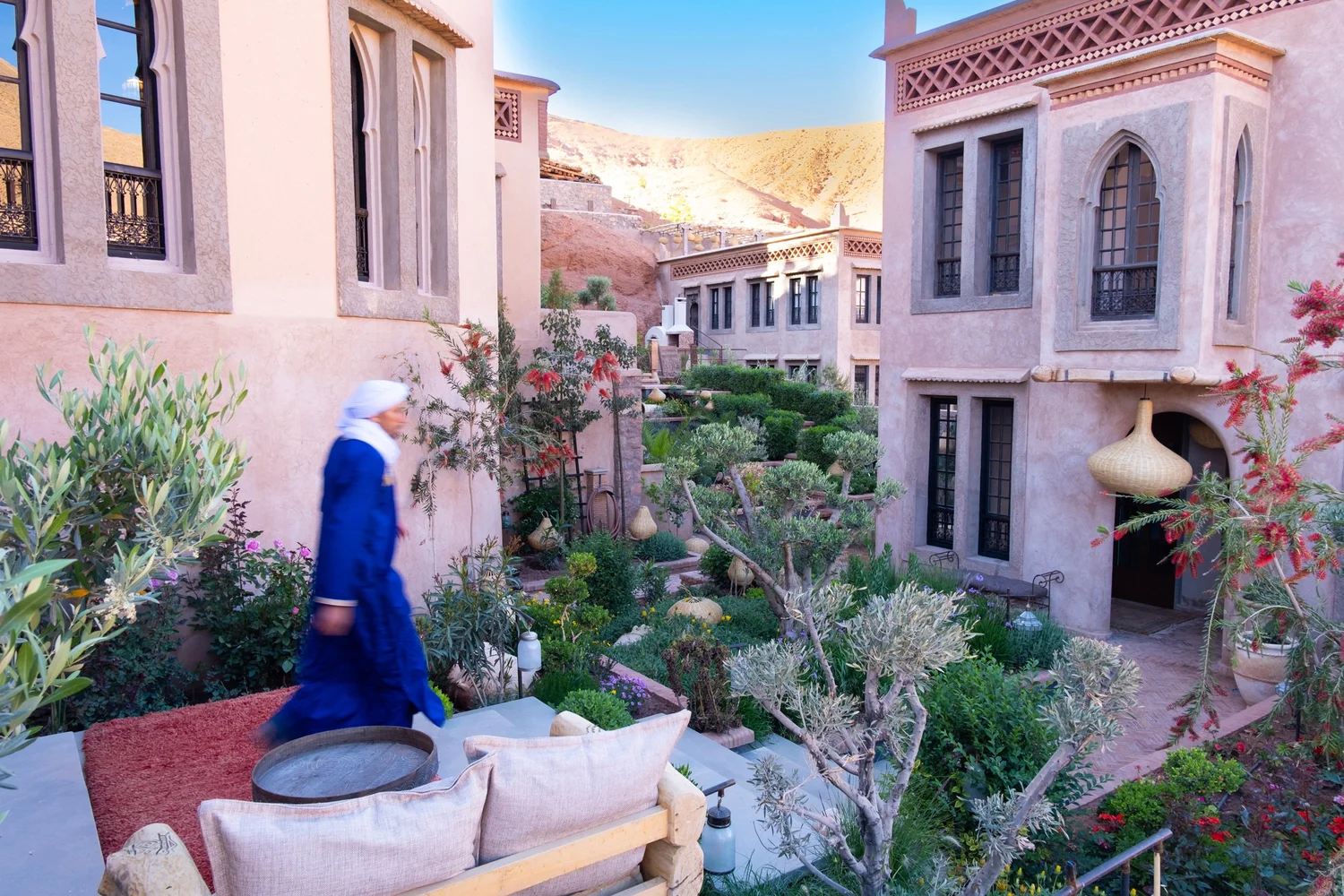
The Diverse Landscapes of Morocco – From Sahara Desert to Atlantic Coast
Explore Morocco’s diverse landscapes: Sahara Desert dunes, Atlas Mountains, fertile valleys, Atlantic and Mediterranean coasts, and the charming Rif Mountains.
Morocco is a country of contrasts — where golden dunes meet snow-capped peaks, Atlantic waves crash against ancient medinas, and fertile valleys stretch between rugged mountain ranges. Few destinations in the world offer such diverse landscapes within a relatively small area, making Morocco a paradise for adventurers, photographers, and cultural travelers alike.
From the Sahara Desert to the Atlas Mountains, from the Atlantic Coast to the Rif Hills, Morocco’s natural beauty is as varied as its history and traditions. This geographical diversity allows visitors to combine multiple experiences in one trip — camel trekking one day, hiking through cedar forests the next, and ending the journey with a stroll along the seaside.
No landscape captures Morocco’s spirit more than the Sahara Desert. The vast seas of sand in Merzouga (Erg Chebbi) and Zagora (Erg Chigaga) are among the most iconic desert landscapes in North Africa. Here, travelers can ride camels across rolling dunes, watch the sunset over golden sands, and spend nights under a sky blanketed with stars.
The desert is not just about sand dunes — it also features rocky plateaus, hidden oases, and traditional Berber villages that preserve centuries-old ways of life.
Stretching across the country, the High Atlas Mountains are home to dramatic peaks, lush valleys, and traditional Amazigh (Berber) communities. The range includes Mount Toubkal (4,167 m), the highest peak in North Africa, attracting trekkers from around the world.
In winter, the High Atlas is snow-covered, offering skiing in resorts like Oukaimeden, while spring and summer bring green valleys filled with walnut trees, rivers, and waterfalls. Villages like Imlil and Aït Bouguemez are perfect bases for exploring this region.
Less visited but equally fascinating, the Anti-Atlas Mountains and the volcanic landscapes of the Jbel Saghro provide rugged beauty. Their barren rock formations, deep gorges, and remote kasbahs give a true off-the-beaten-path feel.
This area connects to the Sahara, creating a natural transition between desert and mountain, where palm oases thrive along riverbeds.
Known as the “Switzerland of Morocco,” the Middle Atlas Mountains are home to cedar forests, alpine lakes, and ski resorts. The town of Ifrane, with its European-style architecture, surprises many travelers. Nearby, the Azrou cedar forest is famous for its Barbary macaque monkeys.
In autumn, the Middle Atlas turns into a patchwork of colors, making it one of the best places for scenic road trips and nature photography.
The Rif Mountains, stretching along Morocco’s northern edge, are greener and gentler than the Atlas ranges. This is where the picturesque blue town of Chefchaouen is nestled, surrounded by olive groves and hiking trails.
The Talassemtane National Park in the Rif is home to dramatic gorges, waterfalls like Akchour, and pristine forests, making it ideal for eco-tourism and trekking.
Morocco’s Atlantic Coast is dotted with vibrant cities and laid-back beach towns. From Tangier in the north to Agadir in the south, the coastline stretches for more than 1,800 kilometers.
Cities like Essaouira charm visitors with their windswept medina walls and kitesurfing opportunities, while Casablanca combines modernity with the impressive Hassan II Mosque overlooking the ocean. Agadir, with its resort atmosphere, is the gateway to the Souss Valley and Anti-Atlas.
The Mediterranean coast is less visited but offers beautiful coves, turquoise waters, and charming towns like Al Hoceima. It’s a quieter alternative to the Atlantic, with plenty of opportunities for boat trips, snorkeling, and relaxation.
Between Morocco’s mountain ranges and deserts lie some of its most fertile regions. The Draa Valley and the Ziz Valley are lined with palm groves, kasbahs, and ancient caravan routes. The Ourika Valley, close to Marrakech, is known for waterfalls and traditional markets.
These valleys not only sustain agriculture but also preserve traditional Amazigh culture.
The beauty of Morocco lies in its contrasts. Within a single trip, travelers can stand atop snow-dusted peaks, wander through palm-filled oases, ride camels into the Sahara, and enjoy fresh seafood by the Atlantic Ocean.
This diversity makes Morocco a year-round destination, where every region tells a different story. Whether you’re seeking adventure, cultural immersion, or natural beauty, Morocco’s landscapes promise unforgettable experiences.
